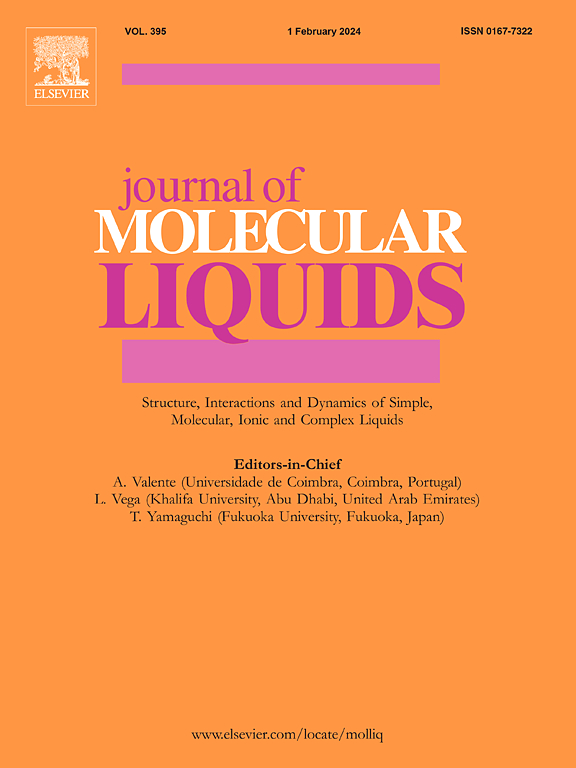Acid-base equilibria of some organic acids and indicator dyes in water – 1-butanol binary solvent system
IF 5.3
2区 化学
Q2 CHEMISTRY, PHYSICAL
引用次数: 0
Abstract
This work is devoted to the acid-base equilibria in water–1-butanol mixtures near the region of stratification. The scale is estimated basing on the so-called NBS USA method for 82 mass % butanol, a solvent with low relative permittivity, = 20.8, high molar fraction of water, = 0.475, and a polarity characterized by = 0.657. The results are confirmed by measuring compensating effects of Volta cells. Glass electrode exhibits a good response in the region from 2.49 to 12.15. Dissociation constants of different organic acids and indicator dyes are determined in 5 and 82 mass % of 1-butanol. The analysis of medium effects for pKa values in 82 mass % 1-butanol, = − , of 32 acid–base couples of various charge types and functional groups, shows that this mixed solvent displays differentiating action: the vary within 6.7 units. The Hammett’s constant increases by 1.6–1.8 times compared to water. The data are compared with those reported for other solvents. The = −0.30 value of the logarithm of the activity coefficient of transfer from water to 82 mass % 1-butanol is deduced. The last solvent can be recommended as an easily available medium that is suitable for studying of acid-base equilibria, e.g., for poorly soluble in water compounds. A set of pKa values in 100 % 1-butanol is presented and compared with the literature data.

求助全文
约1分钟内获得全文
求助全文
来源期刊

Journal of Molecular Liquids
化学-物理:原子、分子和化学物理
CiteScore
10.30
自引率
16.70%
发文量
2597
审稿时长
78 days
期刊介绍:
The journal includes papers in the following areas:
– Simple organic liquids and mixtures
– Ionic liquids
– Surfactant solutions (including micelles and vesicles) and liquid interfaces
– Colloidal solutions and nanoparticles
– Thermotropic and lyotropic liquid crystals
– Ferrofluids
– Water, aqueous solutions and other hydrogen-bonded liquids
– Lubricants, polymer solutions and melts
– Molten metals and salts
– Phase transitions and critical phenomena in liquids and confined fluids
– Self assembly in complex liquids.– Biomolecules in solution
The emphasis is on the molecular (or microscopic) understanding of particular liquids or liquid systems, especially concerning structure, dynamics and intermolecular forces. The experimental techniques used may include:
– Conventional spectroscopy (mid-IR and far-IR, Raman, NMR, etc.)
– Non-linear optics and time resolved spectroscopy (psec, fsec, asec, ISRS, etc.)
– Light scattering (Rayleigh, Brillouin, PCS, etc.)
– Dielectric relaxation
– X-ray and neutron scattering and diffraction.
Experimental studies, computer simulations (MD or MC) and analytical theory will be considered for publication; papers just reporting experimental results that do not contribute to the understanding of the fundamentals of molecular and ionic liquids will not be accepted. Only papers of a non-routine nature and advancing the field will be considered for publication.
 求助内容:
求助内容: 应助结果提醒方式:
应助结果提醒方式:


